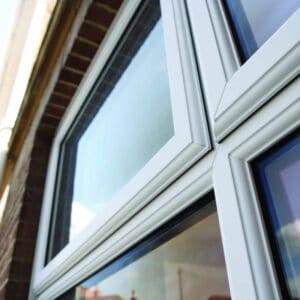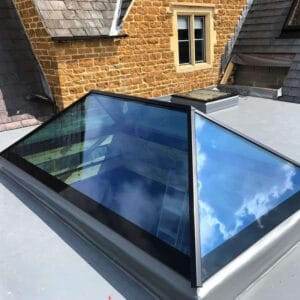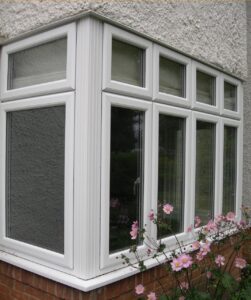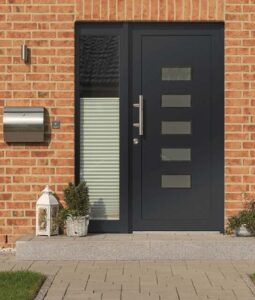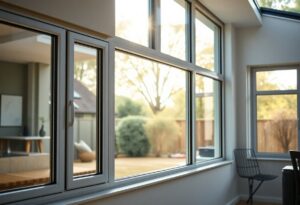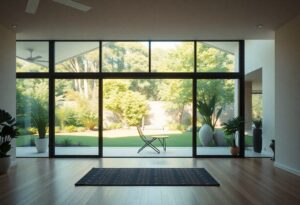Precision in the welding and fabrication process is important for crafting custom steel window designs that stand the test of time. As you explore this intricate procedure, you’ll understand how exact measurements and expert techniques combine to create stunning, durable products. From selecting the right materials to ensuring safety protocols during welding, this guide will equip you with the knowledge needed to appreciate the artistry and engineering behind your bespoke steel windows. Embrace the journey of crafting quality windows that enhance aesthetics and functionality in your space.

Understanding Welding Techniques
Before venturing into custom steel window designs, it’s important to understand the various welding techniques available. Each method offers distinct advantages and can significantly impact the quality and precision of your fabrication. Mastering these techniques empowers you to select the most appropriate one based on your project’s requirements, ensuring that every weld is executed with excellence and care.
MIG Welding
Beside being one of the most popular welding methods, MIG welding (Metal Inert Gas) is well-known for its speed and efficiency. This technique is particularly advantageous for thin materials and provides a smooth, clean finish, making it suitable for intricate custom designs. You can handle a variety of metals, including mild steel, stainless steel, and aluminium, which increases your project’s versatility.
TIG Welding
The TIG welding method (Tungsten Inert Gas) involves a more controlled approach, combining a non-consumable tungsten electrode with a filler rod. This technique allows you to achieve exceptional precision and is especially beneficial for complex joints and thin materials. Its ability to produce strong, high-quality welds makes it a favourite among professionals in the fabrication industry.
And while TIG welding offers numerous advantages, it is vital to acknowledge the increased skill level required for operation. The process demands a steady hand and close attention to detail; any shake or misalignment can lead to defective welds. Additionally, ensure proper safety gear is used as exposure to harmful fumes and UV radiation poses risks. Nevertheless, TIG welding’s ability to deliver meticulous, clean, and strong joints makes it a highly sought-after technique for custom steel window designs.
Fabrication Methods
If you are venturing into custom steel window designs, understanding fabrication methods is vital. These methods are the backbone of achieving precision and quality in your projects, enabling you to tailor your designs to meet specific requirements. From cutting to assembly, each process contributes to the overall strength and aesthetic appeal of your steel windows.
Cutting and Shaping Steel
Above all, the cutting and shaping of steel is a fundamental step in the fabrication process. Utilising techniques like laser cutting or plasma cutting allows you to create intricate designs with remarkable accuracy. Additionally, the shaping process can involve bending or rolling, which ensures that your steel components fit together seamlessly.
Assembly Techniques
Methods of assembly are vital in ensuring your steel windows maintain structural integrity. You might employ techniques such as welding, riveting, or using strong adhesives. Each method has its advantages; for instance, welding provides a strong bond, while riveting allows for easier disassembly.
In fact, it is vital that you assess the strength and durability of your chosen assembly techniques. Welding is often preferred for its exceptional strength and permanence, crucial for high-stress applications. However, bear in mind the safety risks associated with welding, including exposure to intense heat and fumes. Choosing the right method not only enhances the performance of your custom designs but also contributes positively to their aesthetic appeal, ensuring you achieve both beauty and reliability in your final product.
Essential Tools and Equipment
Clearly, having the right tools and equipment is fundamental to achieving precision in custom steel window designs. The various machinery and instruments you utilise will significantly impact the quality of your work. Therefore, investing in top-notch tools enhances your crafting abilities and promotes safety throughout the welding and fabrication process.
Welding Machines
Tools for welding, such as MIG, TIG, and stick welding machines, are the backbone of your fabrication work. Each type offers distinct advantages depending on your project requirements, like metal thickness and joint design. Selecting the appropriate machine ensures both efficiency and high-quality welds.
Safety Gear
The importance of safety gear cannot be overstated in welding and fabrication settings. Protective equipment such as helmets, gloves, and flame-resistant clothing shields you from hazardous elements, ensuring you remain safe while working on complex projects.
Welding preparations should always include a focus on your safety. Investing in a good quality welding helmet that offers both UV and IR protection can prevent permanent eye damage. Heavy-duty gloves will protect your hands from sharp edges and hot surfaces, while flame-resistant clothing shields your body from sparks and heat. Adopting a comprehensive approach to personal protective equipment (PPE) guarantees a safer work environment, allowing you to concentrate on your precision-driven tasks without the distraction of safety concerns.
Design Considerations
Not every design is suitable for custom steel windows. You need to consider factors such as aesthetics, functionality, and compliance with local building regulations. A well-crafted design balances visual appeal with practical requirements, ensuring that your windows not only look great but also perform efficiently in your specific environment.
Aesthetic vs. Structural Integrity
Beside considering aesthetics, you must also weigh the structural integrity of your designs. While beautiful windows enhance your space, they should not compromise safety or durability. Opting for robust materials and designs can ensure your custom steel windows stand the test of time while still meeting your aesthetic vision.
Customization Options
Along with aesthetics and functionality, there are various customisation options that allow you to personalise your steel window designs. You can choose from different shapes, sizes, and finishes, tailoring your windows to perfectly complement your property. Each element can be adjusted to reflect your style while maintaining durability and performance.
In fact, the customisation options available for your steel windows are extensive. From choosing the frame style to selecting colours and textures, you have the opportunity to create something unique. Some suppliers offer different glazing options for energy efficiency, while others may allow you to incorporate decorative elements. Be sure to communicate your vision clearly to ensure the final product meets your expectations while adhering to the necessary structural requirements.

Quality Control in Fabrication
Unlike many other manufacturing processes, quality control in metal fabrication is a multi-faceted approach that ensures every component meets stringent standards. By implementing rigorous quality checks, you can avoid costly mistakes and guarantee that your custom steel window designs not only align with your aesthetic dreams but also fulfil safety and functionality requirements.
Inspection Methods
Along with direct measurements and visual inspections, advanced techniques such as non-destructive testing and laser scanning provide insights into the quality of your fabricated components. These methods allow you to detect imperfections early, ensuring your designs maintain their structural integrity and performance over time.
Ensuring Precision
Precision in fabrication is imperative for delivering outstanding results that meet your specifications. It involves not just exact measurements, but also a commitment to maintaining a high standard throughout the welding and fabrication processes.
This attention to detail ensures that your custom steel window designs fit perfectly within their intended spaces. By utilising state-of-the-art technology and implementing systematic quality checks, you can mitigate the risks of defects. Every weld and joint must be meticulously evaluated to prevent structural failures and ensure that your designs not only look exceptional but also offer long-lasting durability and functionality.
Applications of Custom Steel Windows
Your custom steel windows offer versatile applications, enhancing both residential and commercial spaces. These bespoke designs not only provide aesthetic appeal but also ensure durability and security, making them an excellent choice for various architectural styles.
Residential Designs
One of the most popular applications of custom steel windows is in residential designs, where they can seamlessly blend with both modern and traditional aesthetics. Their robustness adds significant value while providing energy efficiency and sound insulation.
Commercial Installations
Commercial establishments greatly benefit from the unique advantages offered by custom steel windows. Their adaptability makes them suitable for storefronts, offices, and industrial facilities.
For instance, custom steel windows in a commercial setting can enhance security while providing an impressive visual appeal to attract customers. These windows are often designed for large openings, making them perfect for showcasing products in retail spaces. Additionally, their durable construction can withstand heavy usage and weather extremes, ensuring long-lasting performance. Furthermore, their energy-efficient glass options contribute to significant cost savings on heating and cooling, making them an excellent investment for any business.
Summing up
To wrap up, understanding the welding and fabrication process will empower you to achieve exceptional precision in your custom steel window designs. By mastering techniques and attention to detail, you can enhance both the aesthetic and structural integrity of your projects. With a keen focus on the intricacies of this craft, you will ensure that every piece you create not only meets your requirements but also stands the test of time, reflecting the quality and artistry you aim to deliver.
FAQ
Q: What is the welding and fabrication process in custom steel window designs?
A: The welding and fabrication process involves cutting, shaping, and assembling steel materials to create custom window designs. This process typically includes selecting the right steel type, measuring and cutting the metal, welding components together, and finishing the surface to ensure durability and an appealing aesthetic. Each design is tailored to meet specific architectural requirements and client preferences.
Q: What materials are commonly used in the fabrication of custom steel windows?
A: The primary material used in custom steel window designs is steel, often pre-treated to enhance its resistance to corrosion. Stainless steel and mild steel are common choices, depending on the desired aesthetic and strength. Additional materials such as glass, seals, and coatings are also integrated to enhance functionality and appearance.
Q: How does the welding technique affect the quality of custom steel windows?
A: The welding technique significantly influences the strength and appearance of custom steel windows. Techniques such as MIG (Metal Inert Gas) and TIG (Tungsten Inert Gas) welding are frequently employed for their precision and ability to produce strong, clean welds. The quality of the welds contributes to the overall structural integrity and longevity of the windows.
Q: What are the advantages of custom steel windows compared to other materials?
A: Custom steel windows offer numerous advantages, including enhanced durability, high strength-to-weight ratio, and design versatility. Steel frames can accommodate larger panes of glass, providing expansive views and natural light. Additionally, steel can be customised to various finishes and styles, making it suitable for both contemporary and traditional architecture.
Q: How can I ensure that my custom steel window designs meet building regulations?
A: To ensure compliance with building regulations, it is crucial to work with experienced professionals who are knowledgeable about local codes and standards. During the design and fabrication process, considerations such as structural integrity, thermal performance, and safety must be addressed. Engaging a qualified architect or builder who specialises in steel window installations can further ensure that all regulatory requirements are met.

